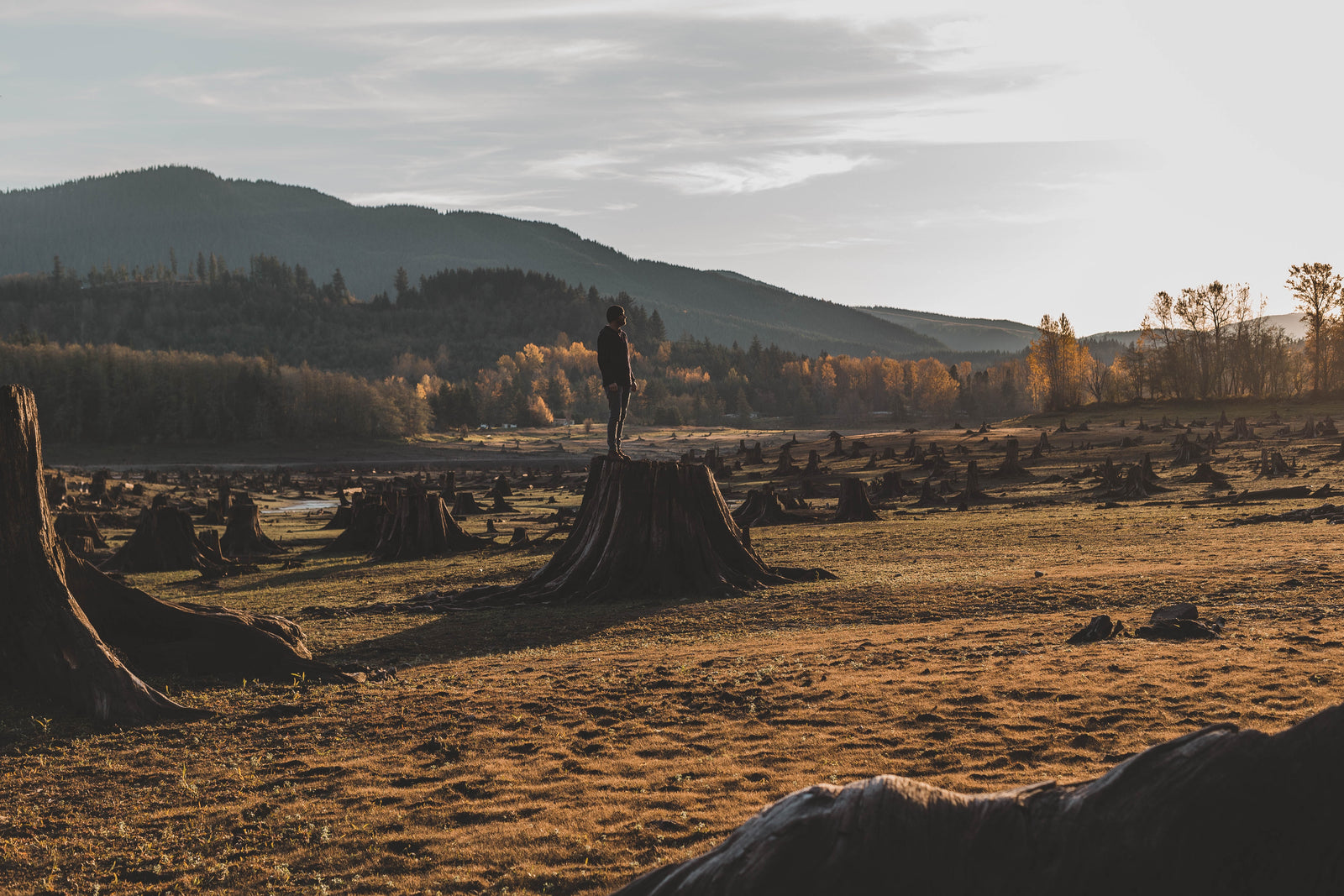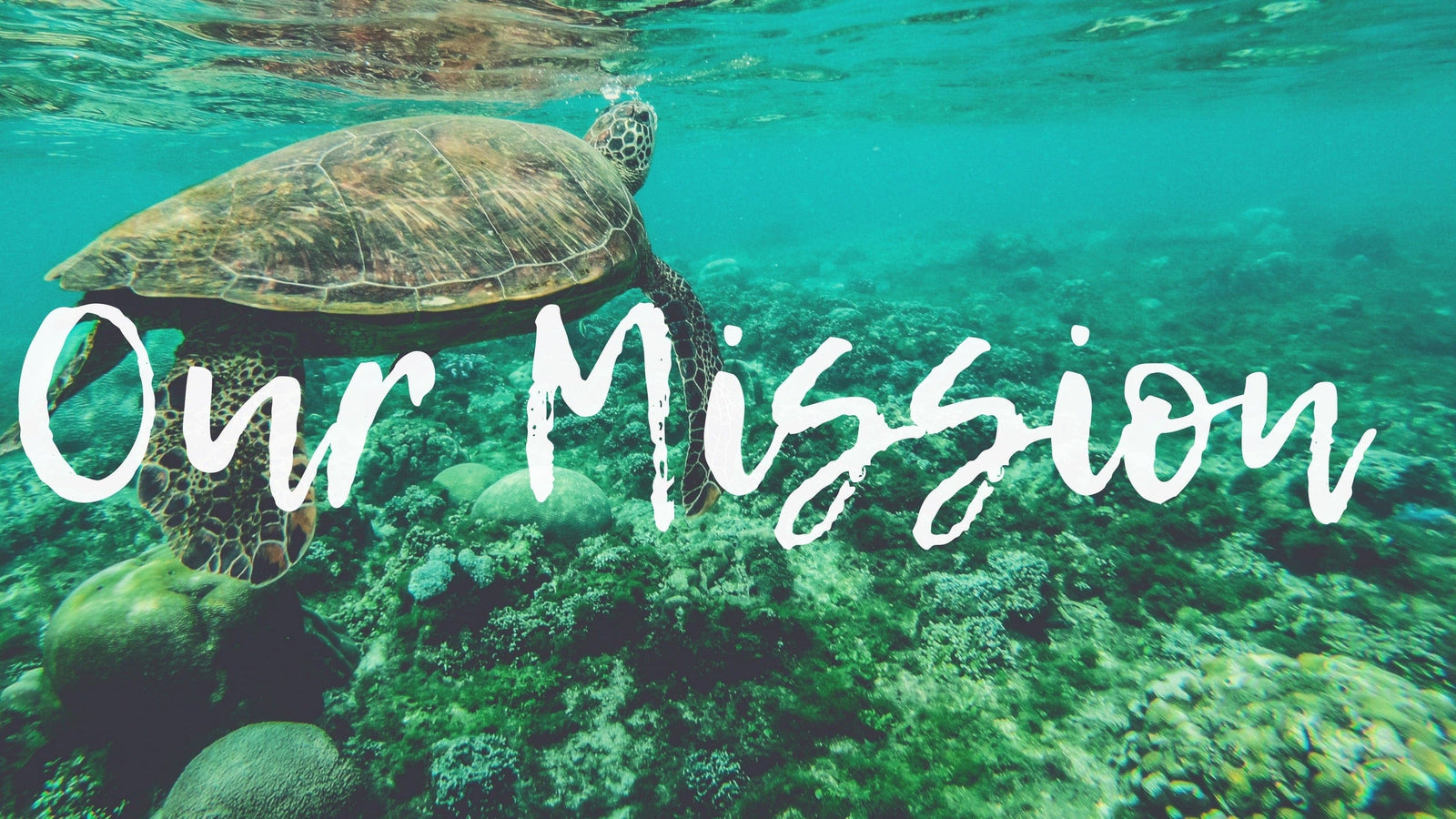Your Cart is Empty
WAREHOUSE CLEARANCE SALE! 80% OFF STORE WIDE!
WAREHOUSE CLEARANCE SALE! 80% OFF STORE WIDE!

We Are The Sixth Extinction: Can We Protect Humanity From Humanity?
May 06, 2019 6 min read
A United Nations Study Has Confirmed Humans are Changing the Environment at a Pace ‘Unprecedented in Human History’
There have been five major extinctions since the evolution of life on Earth. These are events marked by a rapid loss of biodiversity, the most dramatic of which was the end Permian extinction 245 million years ago with 90% species lost. Many scientists believe that we are currently in the midst of a sixth, human caused extinction.
Harvard Professor E.O. Wilson estimates that Earth is currently losing something on the order of 30,000 species per year — which breaks down to the even more daunting statistic of some three species per hour.
Humans are leaving a mark on Earth’s natural environment so significant that close to one million plant and animal species are now at risk of extinction, according to a groundbreaking United Nations report. The report draws on the work of 15,000 separate studies compiled by 450 international experts, and is over 1500 pages in length. Asummary for policy leaders was released on Monday, May 6th, painting a bleak picture for the current and future state of our natural world.
The numbers make for some stark and depressing reading. The biomass of wild mammals has fallen by 82%, severely undermining the stability of food webs around the world. 40% of amphibian species are at risk of extinction, as are 30% of reef-forming corals, while other marine animals are down by close to a third.

As a species, we have single handedly changed the face of our planet permanently. Researchers found that 75% of all land has been turned into farming land, covered by concrete in urban areas, swallowed up by dam reservoirs, or otherwise significantly altered by human activity. Furthermore, 67% of the marine environment has also been changed by fish farming, shipping routes, mining and other projects.
In terms of habitats, the largest loss is of wetlands, which have been drained by 83% since the year 1700, with a follow-on impact on both water quality and birdlife biodiversity. Forests are disappearing at an alarming rate, particularly in the tropics. Since the year 2000, a time period of less than two decades, the area of intact forest fell by 7%, which is the size of France and the UK combined. As a result, more than half a million different species have been left with a remaining habitat that is too small to guarantee their long-term survival. Many of those species are predicted to disappear within the coming decades, if no intervention is taken.
The report also notes how discharges from industry and agriculture are far outpacing the Earth’s capacity to absorb them. More than 80% of wastewater from mining and industry is pumped into streams, lakes and oceans without treatment, along with 300-400 million tons of heavy metals, toxic slurry and other industrial discharges. Plastic waste has risen 1000% since 1980, decimating marine animals. The authors of the report state that plastic pollution now impacts 86% of marine turtles, 44% of seabirds and 43% of marine mammals.
The Human Impact of Biodiversity Loss
For many people who live in urban areas, biodiversity is often something you watch on Netflix as the calming tones of Sir David Attenborough’s narration wash over you. Ultimately, however, there is no escaping the fact that the air you breathe, the food you eat and the water you drink all depend on biodiversity. After all, without plants to conduct photosynthesis there would be no oxygen for us to breath, or without bees to pollinate there would be no crops to eat.

Others examples are perhaps less obvious. Coral reefs and mangrove swamps provide invaluable protection from cyclones and tsunamis for those living on coasts, while trees can absorb air pollution in urban areas.
Some dependencies on nature even seem odd – tropical tortoises and spider monkeys seemingly have little to do with maintaining a stable climate. But the dense, hardwood trees that are most effective in removing carbon dioxide from the atmosphere rely on their seeds being dispersed by these large fruit-eaters.
When scientists investigate each new ecosystem, they find an endless number of these interactions, all crafted over millions of years by natural selection and evolution. If undamaged, this produces a stable, healthy system, finely tuned and in balance. These stable systems are what ultimately add up to a healthy sustainable planet.

High levels of biodiversity also have benefits to society. Many promising new medicines are found in nature, and high levels of biodiversity act as buffers within ecosystems, helping them to remain stable in the face of change. Ultimately, biodiversity helps protect humans from ourselves, by sustaining ecosystems that in themselves sustain us through the production of clean air, clean water and stabilisation of the climate.
If money is a measure, the services provided by ecosystems (such as carbon sequestration, water and air filtration etc.) are estimated to be worth trillions of dollars – double the world’s GDP. Biodiversity loss in Europe alone costs the continent about 3% of its GDP, or €450 million a year.
From an intrinsic point of view, every one of the millions of species is unique, a natural work of art that cannot be recreated once lost. “Each higher organism is richer in information than a Caravaggio painting, a Bach fugue, or any other great work,” wrote Professor E. O. Wilson, often called the “father of biodiversity”, in a seminal paper in 1985, aptly titled “The Biological Diversity Crisis”.
It would be extremely naive to assume that the terrifying numbers detailed in the UN report won’t impact the human race. Quite simply, we can only live divorced from the natural world for so long, and the authors have outlined a multitude of detrimental impacts that biodiversity loss will have on the human race.
In economic terms, the losses are predicted to be enormous. The negative impact of human activities on pollinator populations is predicted to decrease agricultural output by $577 billion, while land degradation has reduced the productivity of 23% of global land.

The future impacts on society, including freshwater shortages and climate instability, are already “ominous” and will worsen without drastic action, according to the authors.
“The health of the ecosystems on which we and other species depend is deteriorating more rapidly than ever. We are eroding the very foundations of economies, livelihoods, food security, health and quality of life worldwide,” said Robert Watson, the chair of the Intergovernmental Science-Policy Platform on Biodiversity and Ecosystem Services. “We have lost time. We must act now.”
“We tried to document how far in trouble we are to focus people’s minds, but also to say it is not too late if we put a huge amount into transformational behavioural change,” said David Obura, one of the main authors on the report and a global authority on corals. “This is fundamental to humanity. We are not just talking about nice species out there; this is our life support system.”
What Next?
The report acknowledges that current conservation attempts, such as the creation of protected areas, are well-intended but ultimately inadequate in their current form. Future forecasts indicate that the recorded negative trends will continue in every scenarios except those that embrace radical change across society, politics, economics and technology.
It says values and goals need to change across governments so that local, national and international policymakers are aligned to tackle the underlying causes of planetary deterioration. This includes a shift in incentives, investments in green infrastructure, accounting for nature deterioration in international trade, addressing population growth and unequal levels of consumption, greater cooperation across sectors, new environmental laws and stronger enforcement.
“We have been displacing our impact around the planet from frontier to frontier,” said Eduardo Brondizio, an Ibpes co-chair from Córdoba National University, Argentina. “But we are running out of frontiers...If we see business as usual going forward, then we’ll see a very fast decline in the ability of nature to provide what we need and to buffer climate change.”
Farmers and ranchers must adopt new techniques to grow more food on less land. Consumers in wealthy countries would have to waste less food and become more efficient in their use of natural resources. Governments around the world would have to strengthen and enforce environmental laws, cracking down on illegal logging and fishing and reducing the flow of heavy metals and untreated wastewater into the environment.The authors also note that efforts to limit global warming will be critical, although they caution that the development of biofuels to reduce emissions could end up harming biodiversity by further destroying forests.
As citizens and consumers, we too need to change. We need to say no to single use plastic. We need to hold our governments and leaders accountable when it comes to setting legislations that govern emissions and pollution. We need to demand more from brands, insisting on quality that lasts rather than disposable fashion that doesn't. We need to demand the use of sustainable materials, and ethical practices that put the sustainability of our planet ahead of short term profit.
In his 1985 publication on biodiversity loss, Professor Wilson ended with the statement “This being the only living world we are ever likely to know, let us join to make the most of it.” That call is more urgent now than ever.
Leave a comment
Comments will be approved before showing up.
Subscribe
Sign up to get the latest on sales, new releases and more …







